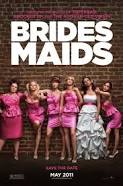Posts Tagged ‘TheMindfulMartialArtist’
Learnings from Lotus position
I was pleased to do the Lotus position yesterday at the gym.
I know I don’t look very happy.
But I was!
After some 30 years and three separate knee injuries (at volley ball, skiing and martial arts) I managed it!
How?
I had training to strengthen my legs, lots of practice and managed to over come my fear of a further injury. My fitness trainer – Tony Laliashvili -had introduced me to a guy who made it look easier and the element of rivalry helped.
The same factors also apply to leadership and management practices, martial arts and sports, in my view. Train, practice, look for role models and be positive.
So try to drop the “T”.

The governance of the Child Sex Abuse Inquiry: SSHARKSS.


UPDATE ON PUBLIC INQUIRIES
Over the period 1990 to end Dec 2017, £639 million has been spent on 68 public inquiries. Amongst the best known are: Bloody Sunday, Chilcott, Mid Staffordshire Foundation Trust, Harold Shipman & Soham murders. Some issues are cost, delays and implementation of recommendations.
This was my attempt in 2016 to analyse the governance of this Inquiry in terms of SSHARKSS.
It seems to have gone quiet with this inquiry. The Chair would probably argue that they are making good progress and getting on with the job. It may also reflect concerns about other events like Grenfell, MeToo, Brexit and so on.
02112016. First written update on progress was published on 31102016. It included background, objectives, achievements and commitments.
30092016. An announcement that the Counsel (senior lawyer) to the inquiry had resigned. The Times also reports that the ex Chair wrote that there needs to be a full review of the Inquiry and basis and scale of the inquiry.
The Home Secretary rejected this view but announced two practical pilot projects – safe houses – on 11092016 on the Andrew Marr show.
The Independent Inquiry into Child Sexual Abuse (IICSA) is currently led by Professor Alexis Jay.
The Prime Minister recently queried the governance of large businesses. What about the governance of this inquiry?
Here are eight questions to ask (SSHARKSS).
Strategy.
What’s the end in mind and what are the priorities?
The IICSA seems to have three purposes:
- Catharsis;
- Prosecution; and
- Stopping abuse in the future?
But what are the priorities between them?
If it is stopping future abuse, do you really need to try to uncover all historic abuse first?
Surely not?
Structure.
Does it have the right skills and roles?
It has had four chairs in two years.
A wide range of skills are needed such as leadership, management, legal, administrative, IT, child, institutions, evidence and case management.
Technically the inquiry looks like a “portfolio” of projects but there seems to be no mention of project skills.
It is unclear how various leadership roles fit together under the Chair.
Happen.
It has massive scope – all instances of abuse in living memory in all institutions in England and Wales.
Is that do-able?
What’s actually happening in performance?
It is difficult to tell. It has c200 staff but little has been reported.
Actions.
Do its actions combine engagement and discipline?
There are no published deadlines, not even for emerging findings.
“Justice delayed is justice denied.”
In my experience, no project (and the inquiry is a collection “a portfolio” of multiple projects) can really work without deadlines.
An internal review of its approach to investigations was announced by the new chair.
Resilience.
Are risks understood and actively managed?
The appointment risks didn’t appear to be.
If, as some argue, it has been an establishment conspiracy, then it is difficult to appoint figures from the establishment.
Ki. Does it comply with the spirit, and letter of good practice, transparency and integrity?
On the one hand, victims’ memories will fade of the details of historical abuse.
On the other hand, some people will be mistaken.
Is it fair not to allow cross examination by representatives of the accused?
Sustainability.
Are there biased incentives?
People paid by the day have little incentive to speed things up.
Fantasists may hope for damages.
Establishment offenders want to cover things up.
Stakeholders.
Can it retain any credibility with victims?
Those convinced of a wide ranging establishment cover up are likely to see the delays and problems as part of that, rather than due to bad luck, mismanagement or flawed policy.
Civil servants, many seconded from the Home Office are also likely (unfairly) to be seen in that light.
Images. Jumping to conclusions. The elephant (in the room?) is too big to grasp.
Please feel free to comment on this post or to contact me here:
#Processes: STOP falling into these 4 traps

Business process re-engineering (BPR) is topical as we struggle with the seven big challenges for 2018.
It’s not new – the idea started as principles of scientific management in the early 1900s.
Elements have been badged as quality, value for money, efficiency, lean and so on.
The idea
But the basic idea is unchanged. It is:
- An organisation can be seen as a collection of processes.
- Successful processes are managed; they are not the result of history.
- ‘Every process of a business should be, can be, and must be, measured, compared and continuously improved’. Dr W Edward Deming
Typical issues are:
Big bottlenecks,
Unnecessary complexity,

Poor information,
Wrong tools,

Lack of learning,

Silo working,
Overload,

Outdated technology; and
Waste.
Dangers
BPR programmes can cause disruption, without generating value.
In my personal experience of 40 BPR assignments, there are four traps to avoid: strategy, technology, organisation & processes or STOP for short.
Here are some ideas to deal with them.
Strategy
- Think creatively about improvement; don’t just produce maps of existing processes.
- Check if the work is needed at all and if efforts are focused on priorities. (At one client, an international car manufacturer, I analysed sales processes. Then told an astounded Board that 80% of sales effort was spent helping headquarters, rather than selling cars.)
- Make sure that you don’t create something efficient that destroys service or safety.
Technology
- Make technology a servant, not a master. It is just a tool but it often becomes a trap.
- Don’t just automate current processes; the point is to transform the fundamentals.
Organisation
- See processes as part of work, organisation, management and behaviours – poor managers or unclear roles can destroy good processes.
- Develop, train and listen to staff.
- Take delivery partners into account.
Process
- See processes from a customer’s perspective; don’t just rely on what you are told. ‘It’s OK to listen to the weather report, but it’s not a bad idea to look out the window to see if it is raining.’
- Apply ideas from a number of approaches – such as lean thinking, six sigma, public value and operational efficiency – not just one.
Picture by Lukadian
Please feel free to comment this post or to contact Mike here:
#Projects – Five common traps (5Cs)
Here are five common #project traps in my experience.
Change and benefits
The business benefits case is unrealistic.
And it’s unclear clear how transformation, will be achieved.
Capability & capacity gaps
Some, or all, of:
are missing.
Chunking of projects
There are too many projects and/or they don’t fit together.
(un)Certainty
There is no effective risk management, resilience or agility.
Chains and weakest links
Bottlenecks exist and there’s insufficient time for proper testing before going live.
A project is only as strong as its weakest link.
Image of Tower of Babel (a project with an unclear rationale and poor foundations) by Pieter Bruegel the Elder, taken from en.wikipaedia.org.
Thin. When it’s thick to be (too) thin.
UPDATE: I wrote this before the Tess Holliday appearance on the front page of Cosmopolitan.
Unreal
Images are often retouched to make women appear thinner and taller.
How many social media images do you see that are unreal and enhanced by:
- Plastic (implants);
- Poison (botox); or
- Photo shopping?
The 3Ps.
Impacts
What is the impact on young women/girls in terms of:
- Confidence;
- Lifestyle; and
- Eating disorders?
Fashion
We know that appearance matters.
It’s certainly fashionable to be thin.
The classic quote, by Kate Moss, is: “Nothing tastes as good as skinny feels.”
Fit
BUT thin is not the same as fit.
The Sunday Times recently ran a “fit-not-thin” campaign.
Guy Ritchie allegedly said:
“Sleeping with Madonna is like cuddling up to a piece of gristle”.
And Jennifer Aniston said
“There’s nothing to announce, just a couple of pounds.”
Future
When will the fashion industry turn away from super skinny models?
When will social media sites stop encouraging eating disorders?
Please feel free to comment this post. You can also contact me here:
Finding Talent: Appearance v success
Appearance matters.
It’s the theme of the book “Blink” by Malcolm Gladwell.
Or the saying “You only have one chance to make a good first impression.”
Cheryl Cole wouldn’t be on TV if she wasn’t a beautiful woman.
A pit bull has street cred in a way that a poodle doesn’t.
Interviewers look closely at body language – eye contact, smiling, hands folded and so on.
There’s a big increase in cosmetic surgery and recent books about “erotic capital”.
But appearance is a poor predictor of business or management success.
I liked the 2011 film Bridesmaids.

The glamorous, but unhappy, heroine turns to the plain fat girl for comfort.
It turns out that the latter owns 18 houses, has the best camper van on the market and the highest security classification. And she gets her man!
The Rain Man was brilliant, despite appearances to the contrary.
Getting the right people on your bus is critical to success.
But don’t decide just on appearance.
It’s wasteful and possibly discriminatory.
And men need to be particularly careful when judging women.
Remember that Ginger Rogers did everything that Fred Astaire did; only she had to dance in high heels and backwards.

Instead:
1. Suspend judgement and have an open mind.
(Think umbrella – it’s only useful when open.)

2. Consider their achievements, personality, knowledge, competencies and attitude.
3. Speak informally to previous employers.
4.Test them out with a small project or exercise.
When putting together client project teams, I always gave a small piece of work to someone and judged them by the result.
Picture by jo-h. It shows a rose with rain drops on it. Its appearance is fragile but it survived a rain storm.








